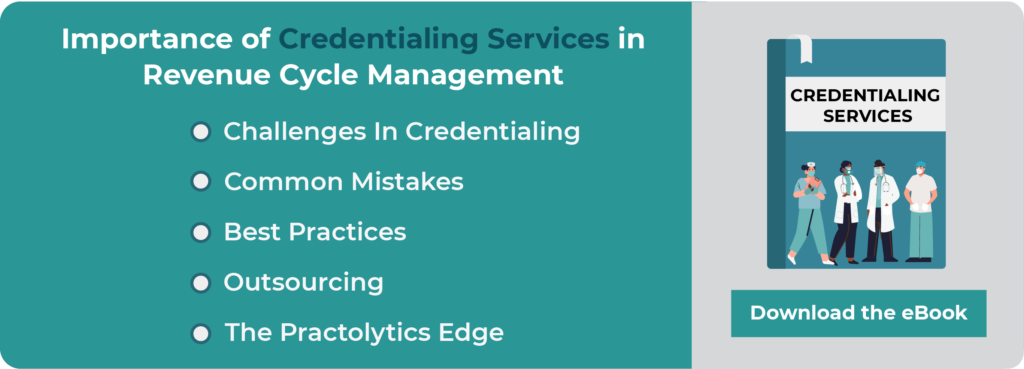Coding Challenges for Inpatient Evaluation Management Services
Inpatient Evaluation and Management services, as the name suggests, are services provided by healthcare providers in the form of patient examination, diagnosis of any illnesses and treatment as needed while the patient is admitted to the hospital or an inpatient facility. Accurate documentation and coding of E&M services can be a challenge as the services provided are mostly cognitive rather than a specific set of procedures. The purpose of coding an E&M service in an inpatient setting is to justify the level of care provided to the patient in the form of codes. Apart from being compliant, coders also need to keep in mind the reimbursements attached to each CPT code. This poses a huge challenge since E&M levels are primarily selected based on provider documentation and not based on the reimbursement rates. This is where a conflict between the provider way and coder way of thinking arises.
Table of Contents
What Is the Role of A Medical Coder In E&M Services?
The definition of quality care now includes accurate medical documentation as well. Concise yet clear documentation is also essential for timely reimbursements. Translating medical documents into medical codes is what medical coders do. Medical codes are simply international codes that describe medical procedures, treatments, diagnoses, and costs. Such codes are necessary while making reimbursement claims from insurance companies.
Being a medical coder is not an easy job as it is a demanding and challenging work that requires rigorous training, attentiveness, and hard work.
What Challenges Do Medical Coders Face for Inpatient E&M Services?
Inaccuracies in medical codes can have grave consequences for any medical practice, as any error can lead to a delay in reimbursements from insurance companies. While human errors are often unavoidable, medical coders face multiple challenges that make their job more difficult. Some of these challenges have been briefly described below.
EHR induced excess documentation volume
As hospitals and practices have all opted to use electronic health records (EHR), a new issue has emerged with regards to the volume of documentation. Medical practitioners have set up a habit of comprehensively describing each visit and every minute detail. A physician may choose to include all data from past admissions for completely unrelated conditions as they only have to copy and paste the older documents. Furthermore, EHR has enabled physicians to select and add physical examination data from dropdown lists within seconds, regardless of whether the physical examinations listed in the documentation have been performed or not. This has led to bloating of documents and increasing difficulties for coders to properly analyse and code every single record.
A physician may choose to include all data from past admissions for completely unrelated conditions as they only have to copy and paste the older documents. Furthermore, EHR has enabled physicians to select and add physical examination data from dropdown lists within seconds, regardless of whether the physical examinations listed in the documentation have been performed or not. This has led to bloating of documents and increasing difficulties for coders to properly analyse and code every single record.
Red flags have been raised by the US Department of Health regarding an increasingly common trend of identical or duplicate documentation. It has become more difficult for medical coders to justify the level of patient care provided to insurance companies.
ALSO READ – How to Setup an Automated Billing Process in AdvancedMD?
Flawed E&M Guidelines
Selecting an accurate E&M code for any particular diagnosis, investigations or treatment is also challenging due to a lack of clarity in guidelines for E&M services. Experienced medical coders often disagree on the most appropriate code for any particular condition.
Complicated rules, endless criteria, and unclear guidelines is an extremely challenging issue faced by all medical coders. Furthermore, the process of selecting medical codes disregards points such as whether the patient’s visit was a follow-up care, which can make it difficult for coders to accurately portray the level of service provided.
Following the Rules of Coding – E&M and ICD
Rules of coding have changed in terms of coding for outpatient office visits, but the inpatient E&M guidelines still remain the same. E&M codes for inpatients are selected based on the three key components of History, Exam, and Medical Decision Making. A coder needs to analyse and understand these key components before coming to a conclusion on the level of code selected. Another challenge for inpatient coding would involve coding for the diagnoses using ICD-10-CM. Since most of the inpatients have multiple conditions evaluated or treated during a single hospital stay, capturing all the diagnoses plays a vital role in getting reimbursed in a timely manner.
Insufficient or Inaccurate Clinical Documentation
While it is upto medical coders to accurately translate medical documents into codes, they cannot do so if the documentation itself is lacking in essential information. If physicians fail to capture vital information, it makes the work of medical coders much more difficult and prone to errors.
ALSO READ – Doctors Vs. Certified Medical Coder: Who Should Assign CPT & ICD Codes to Patient Charts?
Best Practices To Deal With E&M Challenges
Educate Physicians
Physicians usually consider medical documentation as a tiring but essential part of their jobs. But when they fail to provide accurate documentation, it not only impedes the work of medical coders but can also impact revenue. Therefore, it is crucial to educate physicians and train them to document all medical services provided as clearly and concisely as possible in a manner that allows the services to be interpreted accurately by medical coders. Issues such as documentation bloating or insufficient documentation should be promptly conveyed to the physicians to ensure that documentation is accurate from the very beginning.
Review and Develop Strategies For Proper Documentation and Guidelines
Understanding the importance of documenting the diagnosis, the review and order of labs and radiology workup, and the treatment options selected is a key component which drives coding and proper reimbursement. Medical decision making in an inpatient setting plays a vital role both from a provider and coder perspective, since this is the primary driving factor for appropriate code selection.
Using computer-assisted coding (CAC) softwares can help coders by spotting any omissions or errors in codes. While CAC can help minimize errors, it is also important that your coders be trained in the new guidelines. Auditing codes prior to finalization can help the coders continuously learn from their errors and avoid them in the future.
Having a dedicated and well learned team of coders is an essential part of inpatient evaluation and management coding, and the team at Practolytics carries immense exposure and experience in coding inpatient records, producing better results to the providers in terms of documentation, coding, and reimbursements.
Design Templates
Having pre-designed templates to capture accurate information in the correct order can minimize the inclusion of irrelevant medical information such as extensive history or a comprehensive physical examination. EHR systems modifications along with physician education are also essential to prevent documentation bloating.
Understanding each and every challenge faced by medical coders can itself be another challenge. We, at Practolytics, handle all your medical coding issues and your finances to ensure that your practice is making a profitable income. ALSO READ – Coding and Reimbursement Challenges in the Urgent Care Setting
ALSO READ – Coding and Reimbursement Challenges in the Urgent Care Setting
Talk to Medical Billing Expert Today — Get a Free Demo Now!





